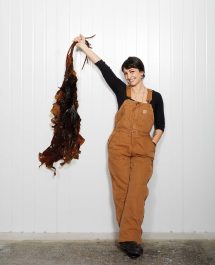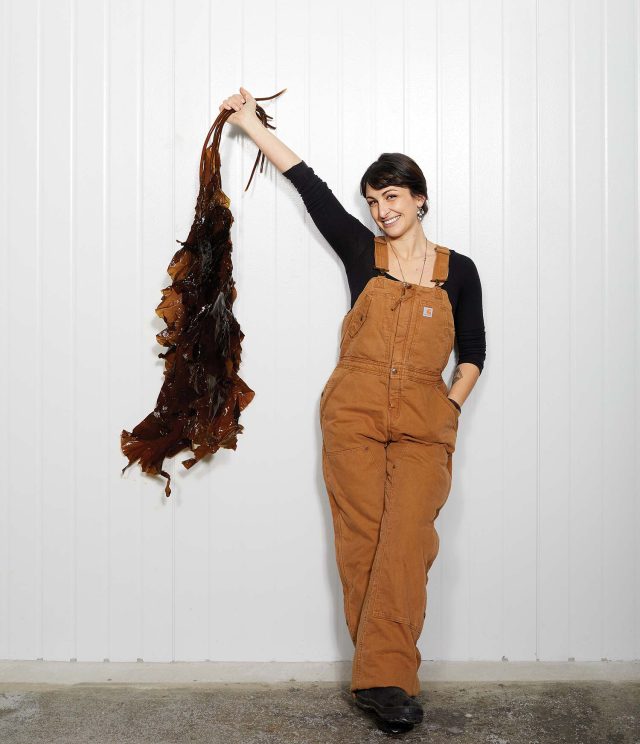
STORY BY JEANNE O’BRIEN COFFEY ✷ PHOTOGRAPHS BY DAVID ENGELHARDT
Ecuadorians have been eating chochos forever. Taxi drivers in Quito will happily tell you about the many health benefits of the bean, which grows in the Andes Mountains, and high school students line up at food trucks at lunchtime to enjoy them ceviche style, dressed with cilantro, lime juice, onion, and tomato. Cultivation of the chocho bean, also known as the Andean Lupin, goes back millennia—stylized paintings of the plant were found on pots dating from 500 B.C.
The reasons to celebrate the chocho, closely related to the chickpea, are many. It has more protein than any other plant-based source. Plus it’s high in fiber and the only bean in existence with no carbohydrates. That makes the bean paleo-friendly. It has a mild flavor, meaning it can blend into many different products, and lacks the compounds that cause, um, gastrointestinal distress.
Stephen Goldmann’s history with chochos only goes back a couple of years, but the California food industry entrepreneur is already obsessed. “They’re delicious,” says Goldmann, the founder and CEO of Five Suns Foods, a company he launched specifically to introduce chochos to the U.S. “I eat them every day when I can,” he adds, noting that he’s replaced whey protein with chocho powder in his morning smoothies and also likes to mix the powder into homemade pizza dough, tortillas, and pasta. He’s betting lots of people will be lining up with him—once they hear about the magic bean, that is.
While everyone eats them in the Andes, chochos are virtually unheard of in the United States. Farmers never thought of the beans as a cash crop, such as cacao or quinoa, so growing and preparing the beans for export was not a priority. But with the explosion in the U.S. market for plant-based proteins—already growing wildly and expected to increase by 50 percent in the next four years—and interest in ancient crops like quinoa, Goldmann thinks it’s time Americans learned about it.
I really felt like, if we were not going to be able to positively impact the entire supply chain, it wasn’t worth doing.”
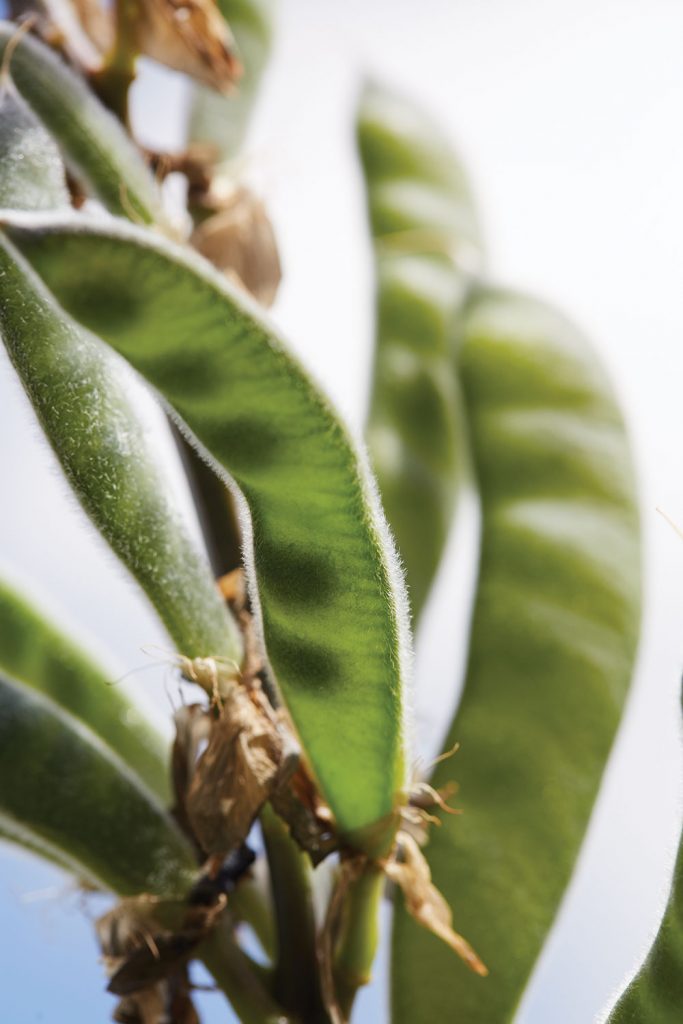
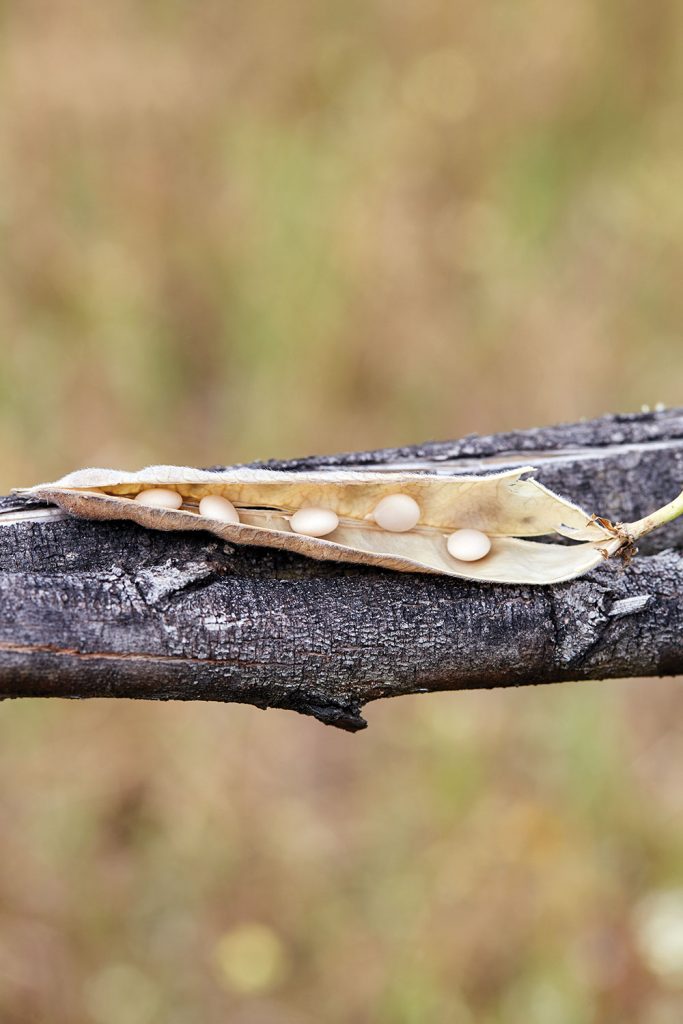

“There is such a broad swath of consumers interested in plant protein and really making a switch,” Goldmann says. “So the market is looking for more sources from all kinds of different places.”
But it isn’t just the trendiness of plant-based protein and indigenous foods that attracted Goldmann. Growing chochos brings a number of benefits to the planet as well. In addition to being spectacularly beautiful, with tall spikes covered in deep purple flowers, the Andean Lupin is drought-tolerant, and resistant to disease and pests, so it requires few inputs to grow. Chochos thrive in poor soil—like the dry sandy hills of the Andes—and make an excellent rotation crop, because they replenish nitrogen and other nutrients that many other crops, including quinoa, suck out of the soil.
All of those things are just as important as market share to Goldmann, who left a job as a high-powered food consultant to start Five Suns a few years back. “In our consulting company, we spent a lot of time working with ingredients that weren’t great, working within systems that were not that healthy, or that we did not believe in, or that were clearly not sustainable,” he recalls. “I really felt like, if we were not going to be able to positively impact the entire supply chain, it wasn’t worth doing.”
Thus was born Five Suns—named for the Aztec creation myth that says our current world is the fifth and most sacred—with a mission to sell plant-based products that are good for producers, people, and the planet. Goldmann hopes chochos are just the first in a lot of foods that meet that criterion.
It was perhaps kismet that connected Goldmann and chocho. On a family vacation to the Galapagos Islands off the coast of Ecuador, he tasted it and heard about its importance to Ecuadorians. He saw an opportunity not just to jump into the plant-protein fray, but to do so in a way that could help the local community as well.
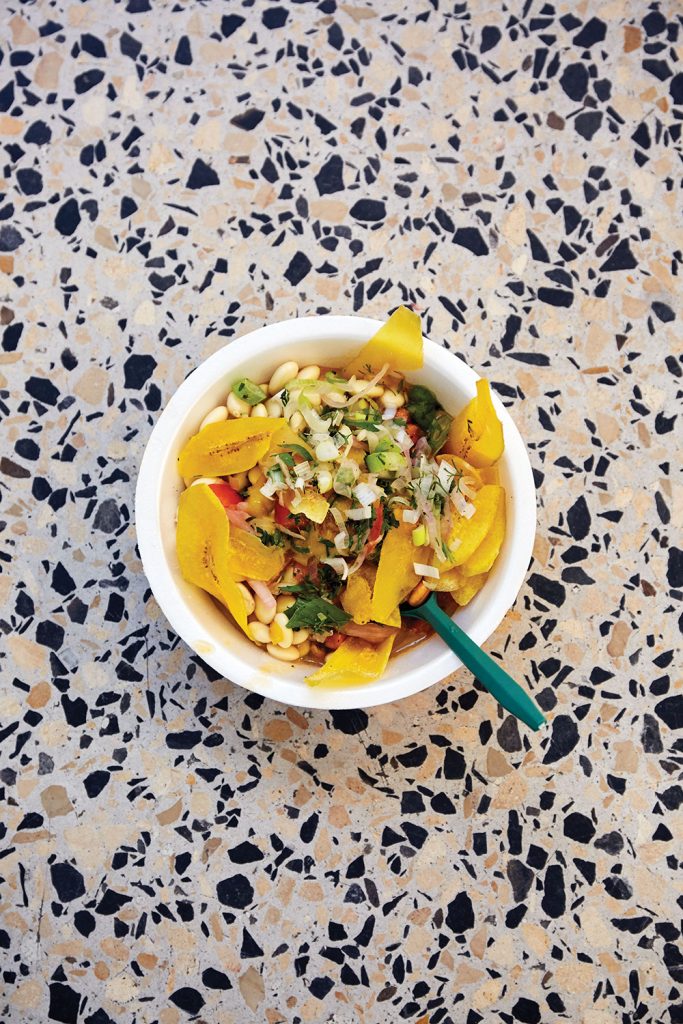

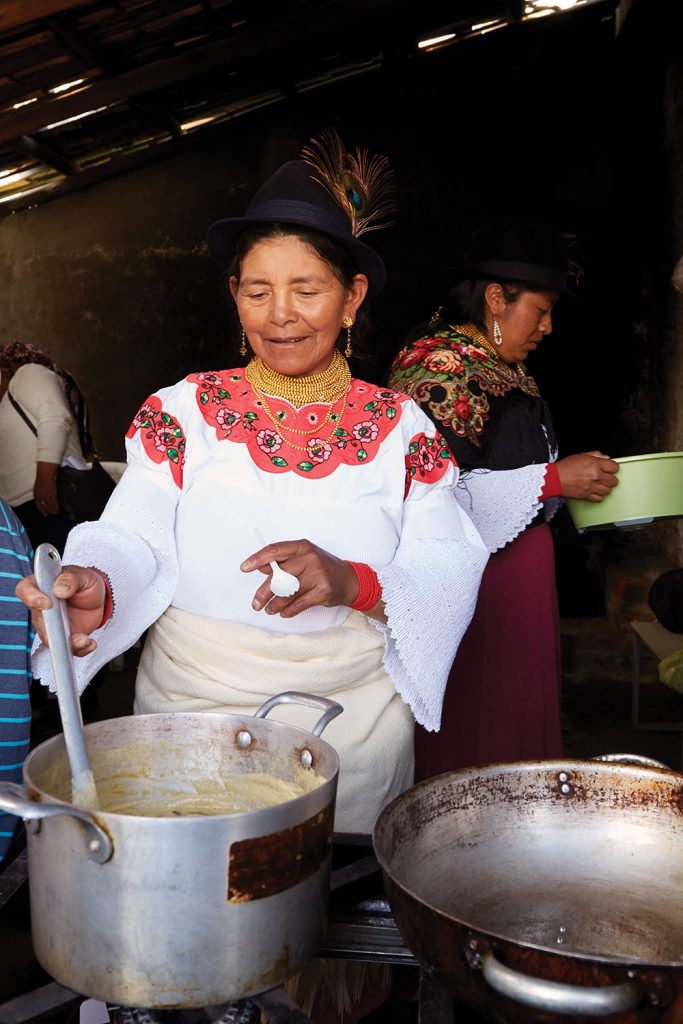
With a history of consulting for big names like Coca Cola and Starbucks, helping them with everything from streamlining operations to launching new packaged goods, Goldmann had the connections to bring chochos to the U.S.
Before launching Five Suns, Goldmann says, “I was always wondering, what would be the thing that would bring together all of my interests and passions and entice me away from consulting. To be challenged and inspired and passionate about what I’m doing every day, and pushed to use every single piece of my experience, is a real gift.”
Goldmann found a kindred spirit in Jeff Sheedy, an American entrepreneur and investor who has lived in Ecuador for 20 years. Sheedy, director of Ecuador operations for Five Suns, has spent years helping cacao farmers in the Amazonian rainforest find better farming methods and increase yields, while paying a fair wage for their product.
Sheedy says he saw the potential in chochos right away. Given the growing American interest in plant-based eating, it could be much more important than cacao to the Ecuadorian economy. “[If chochos take off] literally tens of thousands of families and their communities won’t have to go live in a city,” Sheedy says. “They get to stay in the rural areas that they know while radically improving their lives. That’s a really rewarding thing.”
Within Ecuador over the past few years, chochos have been transitioning from a staple food of indigenous Andean peoples to something turning up in trendy restaurants. But they haven’t been grown at the scale needed for the export market, thus limiting the exposure outside the Andes. Plus chochos, like all lupin beans, are high in alkaloids, bitter compounds that must be removed before consuming. Traditionally, people removed the bitterness by tossing the fresh beans in a sack in a river for a week or so, letting the rushing water wash away the undesirable elements. But that’s not something that can be done on a large scale, Sheedy says with a laugh.
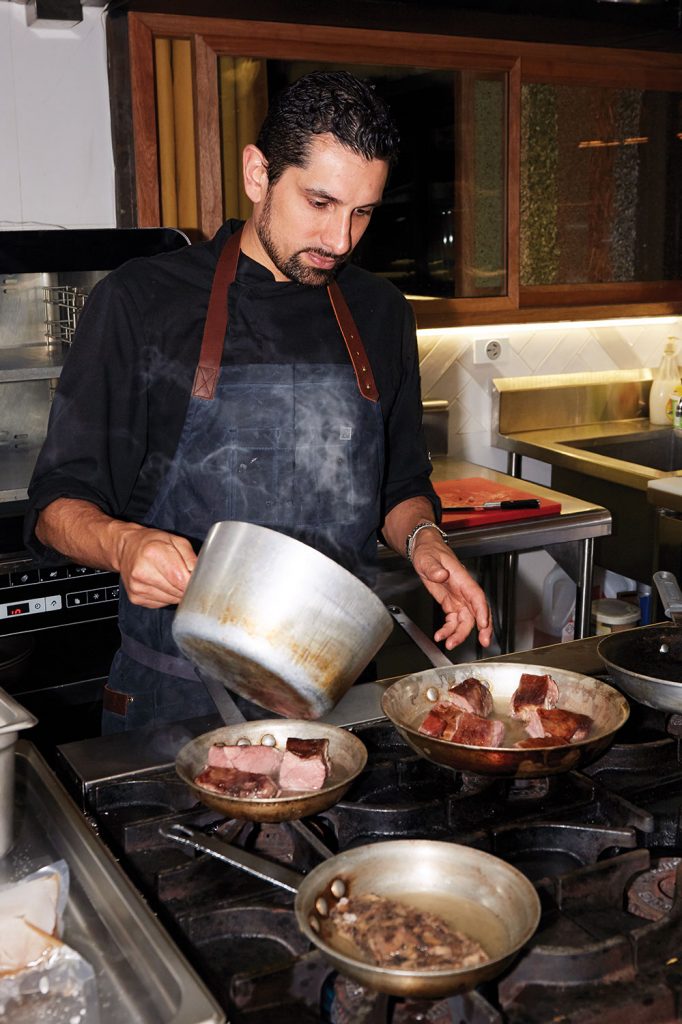
Figuring out how to de-bitter chochos efficiently has been a large part of Five Suns’ work in bringing the protein to market, along with lining up more farmers to grow it, so as not to impact the local market for the beans. With both of those tasks well underway, now the company is looking for partners in the food industry who want to sell the bean as a supplement powder, in plant-based milks to enhance protein, or fresh in Tetra Paks.
Because of their mild flavor, chochos can offer a secret (or not so secret) nutrient boost in everything from smoothies to tortillas, as Ecuadorians can tell you first hand. And locals are incorporating the beans in more dishes daily.
High in the Andes, two hours north of Quito, a group of predominantly women dressed in traditional intricate hand-embroidered skirts gathered recently to learn some new ways to prepare the beans. The resulting feast encompassed everything from light flaky empanadas and soup to manjan, a caramelly dulce de leche-like sweet the village kids devoured, heading back for seconds and thirds.
Meanwhile at Terra, a trendy new restaurant in Quito with a focus on indigenous ingredients, chef Alvaro Reinoso Carvalho has found the bean offers a lot of flexibility, incorporating it into everything from decadent seafood soup to feather-light gnocchi garnished with pepper sauce.
“Chocho doesn’t have a lot of flavor, so I like play with textures,” says Carvalho, who is dedicated to taking local ingredients and combining them with modern techniques, in the process bringing Ecuadorian cuisine to the world culinary stage.
U.S. manufacturers are equally excited about the potential, and the folks at Five Suns Foods are hoping that by this time next year chochos will be turning up in grocery stores across the country, perhaps replacing some more processed plant-based protein.
“Pea protein and soy protein do not taste good,” Goldmann says. “They require a lot of processing to get them even close to neutral.”
But chochos slip deliciously into a variety of dishes, or shine on their own. Don’t believe us? Wait a few months, and the beans will turn up at your grocery store. Or you can hop a flight to Ecuador. Book a table at Terra or just stop by a local market. Your cab driver can point the way.


Meet Your New Favorite Superfood
Here are six reasons to snag some chochos when they arrive in local stores.
1
Protein Powerhouse
Chochos contain more protein than any other plant-based source on the planet—more than 50 percent‚ while soy is about 40 percent and most other legumes are even less.
2
Zero net carbs
Chocho is the only bean with no sugar, making it potentially paleo-friendly.
3
Easily digestible
Chochos have none of the compounds present in other legumes that cause bloating and gas.
4
Packed with good fat
Chochos are about 20 percent healthy fat—mainly oleic acid, the same healthful monounsaturated fatty acid found in olive oil.
5
High in fiber
The bean’s insoluble fiber helps you to feel full, improves regularity, and is important for gut health.
6
Blood-Sugar Balance
Lupin protein extracts may be effective in prevention and treatment of diabetes, which is virtually unheard of among Andean indigenous peoples.

